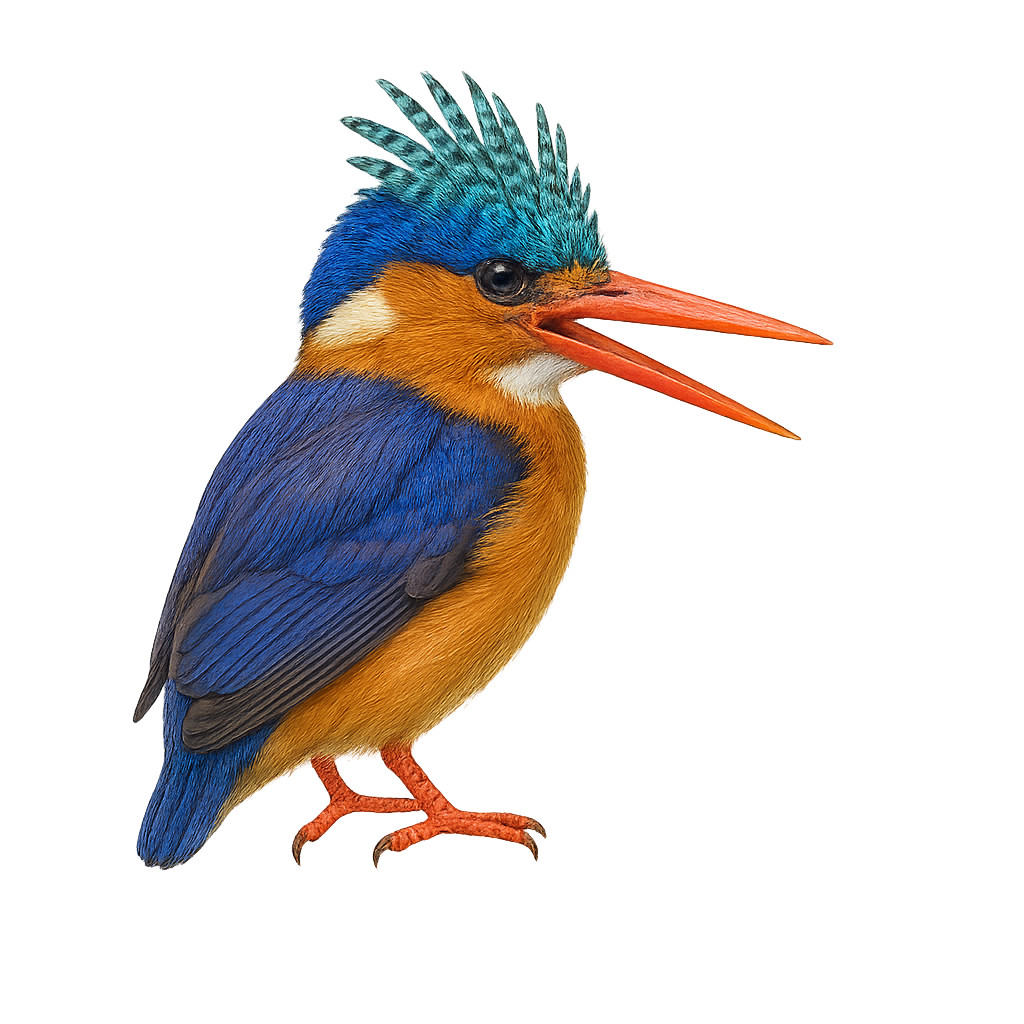Your wildlife photography guide.
Explore the malachite kingfisher in detail, study its behavior, prepare your shots.
Where to observe and photograph the malachite kingfisher in the wild
Learn where and when to spot the malachite kingfisher in the wild, how to identify the species based on distinctive features, and what natural environments it inhabits. The WildlifePhotographer app offers tailored photography tips that reflect the malachite kingfisher’s behavior, helping you capture better wildlife images. Explore the full species profile for key information including description, habitat, active periods, and approach techniques.
Malachite Kingfisher
Scientific name: Corythornis cristatus

IUCN Status: Least Concern
Family: ALCEDINIDAE
Group: Birds
Sensitivity to human approach: Suspicious
Minimum approach distance: 5 m
Courtship display: September to November
Incubation: 14-16 jours
Hatchings: September to December
Habitat:
Rivers, lakes, marshes
Activity period :
Primarily active during the day, with peak activity in the morning and late afternoon.
Identification and description:
The Malachite Kingfisher, Corythornis cristatus, is a small, vibrantly colored bird found primarily in sub-Saharan Africa. It is easily recognized by its distinctive crest and bright plumage, which features shades of blue, orange, and white. This kingfisher frequents the banks of rivers, lakes, and marshes, where it primarily hunts fish and aquatic insects. It is often seen perched on a branch or reed, patiently watching for prey before diving with precision to catch it. Despite its small size, it is an efficient and agile predator. Its breeding season varies by region, but it is generally monogamous and territorial during this time.
Recommended lens:
400 mm – adjust based on distance, desired framing (portrait or habitat), and approach conditions.
Photography tips:
To photograph the Malachite Kingfisher, it is advisable to use a telephoto lens of at least 400mm to capture detailed images without disturbing the bird. Patience and discretion are essential, as this bird is suspicious. Opt for early morning or late afternoon hours to take advantage of soft, flattering light. Set up near its natural habitat, such as riverbanks, and wait for it to perch on a branch or reed. Use a tripod to stabilize your camera and be ready to capture its spectacular dive.
The WildlifePhotographer App is coming soon!
Be the first to explore the best nature spots, track rutting seasons, log your observations, and observe more wildlife.
Already 1 449 wildlife lovers subscribed worldwide

